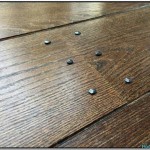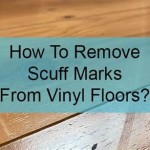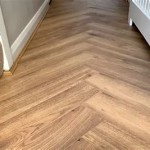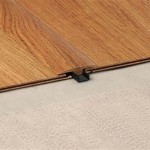Best Sound Insulation Flooring: A Comprehensive Guide
Sound insulation in flooring refers to a material's ability to reduce the transmission of sound, both airborne (through the air) and impact (through physical contact). Effective sound insulation in flooring is crucial for creating comfortable and quiet living environments, particularly in multi-story buildings, apartments, condominiums, and even homes with multiple floors. Noise pollution can significantly impact quality of life, leading to stress, sleep disruption, and reduced concentration. Therefore, selecting flooring with good sound insulation properties is a significant investment in well-being and property value.
There are two primary metrics used to quantify the sound insulation performance of flooring: Impact Insulation Class (IIC) and Sound Transmission Class (STC). IIC measures a floor's ability to block impact noise, such as footsteps, dropped objects, or furniture movement. STC, on the other hand, measures a floor's ability to block airborne noise, such as conversations, music, or television sounds. Both values are measured in decibels (dB), with higher numbers indicating better sound insulation.
Building codes often specify minimum IIC and STC ratings for flooring, especially in multi-family dwellings. These codes aim to ensure a reasonable level of sound isolation between units. However, relying solely on minimum code requirements may not be sufficient for those seeking a truly quiet environment. Factors such as individual sensitivity to noise, the specific activities taking place in adjacent units, and the overall acoustic environment of the building should be considered when selecting flooring for sound insulation.
Various flooring materials offer varying degrees of sound insulation. Some materials inherently possess better sound-dampening properties than others. Additionally, the installation method and the use of underlayments can significantly impact the overall sound insulation performance of a flooring system. Understanding the characteristics of different flooring types and their potential for sound reduction is essential for making informed decisions.
Key Considerations for Selecting Sound Insulation Flooring
Choosing the right flooring for sound insulation involves several factors. Understanding these key considerations will help ensure you select a product that meets your needs and provides the desired level of noise reduction.
Flooring Material Type
Different flooring materials possess inherent sound insulation properties due to their density, composition, and structure. Some of the most effective options include:
- Carpet: Carpet is a naturally excellent sound absorber, particularly thick, high-pile carpets with dense padding. The fibers trap sound waves, reducing both airborne and impact noise transmission.
- Cork: Cork is a sustainable and resilient flooring material with excellent sound insulation properties. Its cellular structure absorbs vibrations and reduces impact noise. Cork flooring can also help dampen airborne noise.
- Rubber: Rubber flooring is commonly used in gyms and other areas where impact noise is a concern. Its density and elasticity make it highly effective at absorbing vibrations and reducing noise transmission.
- Luxury Vinyl Tile (LVT) with Underlayment: LVT itself offers some sound dampening, and when paired with a specialized sound insulation underlayment, it can provide significant noise reduction. The underlayment is crucial for improving the IIC and STC ratings of LVT flooring.
- Engineered Hardwood with Underlayment: Engineered hardwood, while beautiful, doesn't inherently offer much sound insulation. However, when installed with a quality sound-reducing underlayment, it can achieve acceptable levels of noise reduction.
Harder surfaces, such as ceramic tile, stone, and laminate, generally offer poor sound insulation on their own. However, these materials can be combined with sound-dampening underlayments to improve their acoustic performance.
Underlayment Selection
The underlayment is a crucial component of a sound-insulated flooring system. It is a layer of material installed between the subfloor and the finished flooring. Underlayments are specifically designed to absorb vibrations and reduce noise transmission. Different types of underlayments are available, each with varying levels of sound insulation performance. Some common types include:
- Foam Underlayment: Foam underlayment is a popular and affordable option available in various thicknesses and densities. It provides a basic level of sound insulation and is suitable for reducing impact noise.
- Cork Underlayment: Cork underlayment offers excellent sound insulation properties due to its natural cellular structure. It is particularly effective at reducing impact noise and can also help dampen airborne noise.
- Rubber Underlayment: Rubber underlayment is a high-performance option that provides superior sound insulation. It is denser and more resilient than foam underlayment, making it highly effective at absorbing vibrations and reducing noise transmission.
- Acoustic Underlayment: These specialized underlayments are designed with advanced sound-dampening technologies. They often incorporate multiple layers of materials with different densities and properties to maximize sound insulation performance.
Choosing the right underlayment depends on the type of flooring being installed, the desired level of sound insulation, and the budget. It's essential to check the IIC and STC ratings of the underlayment to ensure it meets your specific requirements. Some underlayments are designed for specific types of flooring, so it's crucial to choose one that is compatible with your chosen flooring material.
Installation Method
The installation method can also influence the sound insulation performance of flooring. For example, floating floors, where the flooring material is not directly attached to the subfloor, tend to transmit more impact noise than floors that are glued or nailed down. However, floating floors often work well with underlayments specifically designed to reduce impact noise and provide cushioning. Understanding the impact of the installation method on sound transmission is crucial.
Proper installation is paramount for achieving optimal sound insulation. Gaps or voids between the flooring and the subfloor can create pathways for sound transmission. Ensuring a tight and secure installation will minimize these pathways and improve overall sound insulation performance. Consider hiring a professional installer experienced in sound insulation techniques to ensure the job is done correctly.
Comparing Sound Insulation Properties of Different Flooring Types
The following provides a comparative overview of the sound insulation properties of popular flooring materials. The IIC and STC ratings are approximate and can vary depending on the specific product and installation method.
Carpet
Carpet is generally considered the best flooring option for sound insulation. The dense fibers and padding effectively absorb both airborne and impact noise. A thick, high-pile carpet with a dense underlayment can achieve IIC and STC ratings of 50 or higher, offering excellent sound reduction.
Pros: Excellent sound absorption, comfortable underfoot, available in various styles and colors.
Cons: Can be susceptible to stains and allergens, requires regular cleaning.
Cork
Cork flooring is a sustainable and eco-friendly option with good sound insulation properties. Its cellular structure absorbs vibrations and reduces impact noise. Cork flooring can achieve IIC and STC ratings in the range of 45-55, depending on the thickness and density of the material.
Pros: Sustainable, resilient, comfortable, naturally antimicrobial.
Cons: Can be susceptible to scratches and dents, limited color options.
Rubber
Rubber flooring is highly effective at absorbing impact noise due to its density and elasticity. It is commonly used in gyms and other high-impact areas. Rubber flooring can achieve IIC ratings of 60 or higher, providing excellent sound reduction.
Pros: Excellent impact absorption, durable, slip-resistant.
Cons: Can be expensive, limited aesthetic appeal for residential use.
Luxury Vinyl Tile (LVT)
LVT flooring offers a wide range of aesthetic options and is relatively durable and easy to maintain. However, LVT itself does not provide significant sound insulation. When paired with a sound-reducing underlayment, LVT can achieve acceptable levels of noise reduction. The IIC and STC ratings of LVT flooring with underlayment can range from 40-50, depending on the quality of the underlayment.
Pros: Durable, water-resistant, easy to maintain, wide range of styles.
Cons: Requires underlayment for adequate sound insulation, not as naturally sound absorbent as carpet or cork.
Engineered Hardwood
Engineered hardwood offers the look and feel of solid hardwood at a lower cost. However, like LVT, engineered hardwood does not inherently provide much sound insulation. Installing a sound-reducing underlayment is essential for improving its acoustic performance. The IIC and STC ratings of engineered hardwood with underlayment can range from 40-50, depending on the quality of the underlayment.
Pros: Provides the look of hardwood, more stable than solid hardwood, can be refinished.
Cons: Requires underlayment for adequate sound insulation, can be susceptible to scratches and dents.
The Importance of Professional Installation and Acoustic Testing
Proper installation is crucial for maximizing the sound insulation performance of any flooring system. Even the best flooring materials and underlayments will not perform optimally if they are not installed correctly. Gaps or voids between the flooring and the subfloor can create pathways for sound transmission, negating the benefits of sound-dampening materials.
Hiring a professional installer with experience in sound insulation techniques is highly recommended. A professional installer will ensure that the flooring and underlayment are properly installed, minimizing gaps and maximizing sound absorption. They can also advise on the best installation methods for specific flooring materials and subfloor conditions.
In some cases, acoustic testing may be necessary to verify the sound insulation performance of a flooring system. Acoustic testing involves measuring the IIC and STC ratings of the installed flooring to ensure it meets the desired levels of noise reduction. This is particularly important in multi-family dwellings where building codes specify minimum sound insulation requirements. Acoustic testing can identify any weaknesses in the flooring system and allow for corrective measures to be taken.
Selecting the best sound insulation flooring involves considering several factors, including the type of flooring material, the underlayment, the installation method, and the overall acoustic environment. Careful planning and attention to detail are essential for creating a comfortable and quiet living space.

Types Of Sound Insulation To Dampen Noise Guide Forbes Home

Soundproof A Floor Best Level 3 Soundproofing Company

Case Study How To Soundproof A Floor 5 Acoustic Solutions

Soundproof A Floor Best Level 3 Soundproofing Company

When Quiet Matters A Guide To Acoustic Flooring All Things

Sound Absorbing Flooring 4 Options Twenty Oak

When Quiet Matters A Guide To Acoustic Flooring All Things

Soundproof Floor Underlayment Duracoustic S T O P From Asi

Case Study How To Soundproof A Floor 5 Acoustic Solutions

Sound Absorbing Flooring 4 Options Twenty Oak
Related Posts








